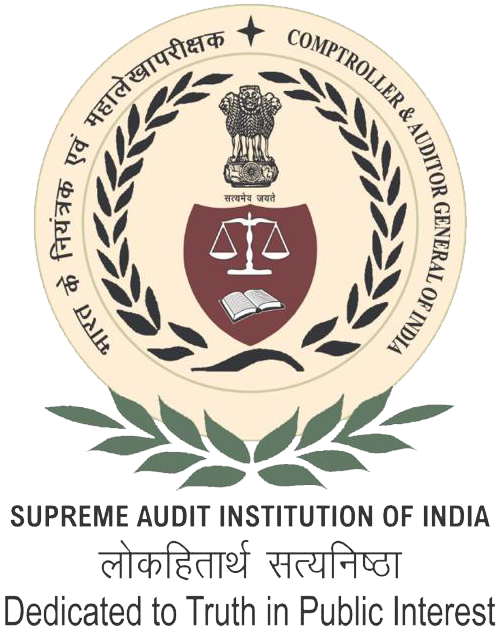Local Bodies Audit
Though Government of Sikkim enacted Panchayati Raj Act in 1993 in compliance to the 73rd Constitutional Amendment, the roots of Panchayati Raj in the State date back to the time when Sikkim was a kingdom under the Namgyal Dynasty. During that period, landlords or Zamindars were known as Kazi. Under the Kazis there were Mandals and Karbaris to look after the working of fields and collect taxes in the form of Dhuri Khazana. Immediately after the abolition of Zamindari in 1948, Panchayats were created. The Panchayats consisted of the landlord or his representative and four other members from the block, selected by the people in a meeting convened for the purpose. These Panchayats filled the gap created by the abolition of Zamindari and were essentially quasi-judicial or Nyaya Panchayats. Formally, the Sikkim Panchayat Act (SPA), 1965 was enacted to consolidate and amend laws relating to Panchayats in Sikkim and made effective from December 1965. The objective of establishing these Panchayats was to facilitate rural development and to enable participation by all communities at the village level. The term of such Panchayats was three years and each of these Panchayats was assigned 16 duties and functions. To fulfil these duties, the Panchayats had resources comprising of house tax, a proportion (10 per cent) of the land revenue of the block, matching grants by the Darbar for original work (for which public contribution was collected), sanitation cess and water cess. The Act also provided reservations for minorities. This arrangement continued till enactment of the SPA, 1993 in compliance to 73rdamendment of the Constitution. In order to operationalise administrative decentralisation of funds, functions and functionaries among PRIs, the Ministry of Rural Development, G0I constituted (July 2001) the Central Task Force (CTF) for suggesting the manner of transfer of functions to each tier of PRIs so that devolution of all the 29 functions listed in the XIth Schedule of the Constitution could be completed by March 2002. Article 243 G of the Constitution enables provision for transfer of these functions to different tiers of PRIs. For effective functioning of State Government and PRIs, it is necessary to delineate the role and responsibilities of the State Government and each tier of PRIs for every transferred function. This exercise was done through activity mapping[1] in April 2008. The State Government through Notification No. 3/RMDD/P dated 29.04.2008 has transferred only 20 functions to the PRIs. The remaining 9[2] functions were still with the State Government. These functions were being discharged by the respective departments. Thus, while all functions were yet to be transferred, even in the cases where they were transferred, adequate funds were not released by the departments concerned. Thus, the PRIs could not initiate a number of activities such as soil conservation, forest related activities for forest conservation, self-employment through small scale industries, etc. mandated in the 73rd Constitutional Amendment.
Primary Auditor Director, Local Fund Audit (DLFA) is the primary auditor to conduct the audit of PRIs and ULBs of Sikkim. ‘The Sikkim Local Fund Audit Act, 2012’ provided for establishment of DLFA (June 2012) to regulate the audit of Local Funds. Audit by Comptroller and Auditor General of India As per Section 48(2) of the Sikkim Panchayat Act, 1993, the State Government is required to appoint an Auditor for audit of accounts of the GPs. Section 48 (3) of the Act provides for audit of accounts of GPs by the Comptroller & Auditor General of India (CAG). Further, as per Section 86 of the Act, the accounts of the GP or ZP shall be examined and audited by the Auditor. The State Government established (June 2012) Director, Local Fund Audit (DLFA) for audit of Panchayati Raj Institutions (PRIs). In keeping with the recommendations of the Thirteenth Finance Commission and guidelines issued by the Ministry of Finance, Government of India, Government of Sikkim entrusted (June 2011) the audit of accounts of PRIs to CAG under Section 20(1) of CAG's (DPC) Act 1971, under standard terms and conditions of the Technical Guidance and Supervision module |
[1]Activity Mapping is an exercise to devolve various functions to be discharged by the GPs and ZPs.
[2](i) Land improvement, implementation of land reforms, land consolidation and soil conservation; (ii) Rural housing; (iii) Poverty alleviation programme; (iv) Technical training and vocational education; (v) Adult and non-formal education; (vi) Libraries; (vii) Social welfare including welfare of handicapped and mentally retarded; (viii) Welfare of the weaker sections and in particular of the SC and ST; and (ix) Public distribution system.

